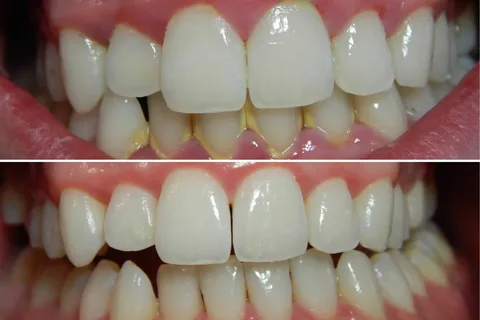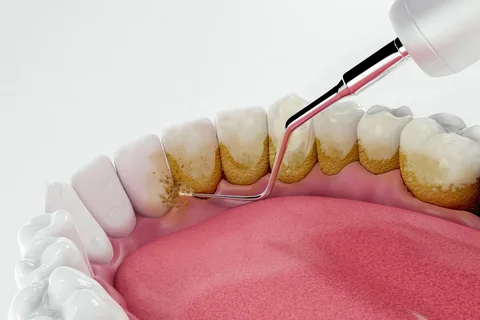Modern concept of caries pathogenesis
Machine translation
Original article is written in RU language (link to read it).
The current concept of the development of the carious process is based on the mandatory presence of the following four factors, and their presence must be simultaneous, otherwise the mechanism of demineralization of hard tooth tissues will not start. Caries factors:
substrate,
plaque,
susceptible tooth
time.
More detailed information about dental caries on the webinar Caries and non-carious lesions of primary teeth: from remineralization therapy to crown placement .
The main condition for triggering enamel demineralization is the entry into dental plaque, inhabited by acid-forming microorganisms, of a substrate, which is monosaccharides. However, the development of a pathological carious process is possible only with a constant and long-term supply of sugars; there must be a continuous “feeding” of acid formation. Due to the constant intake of carbohydrates and inadequate oral hygiene, cariogenic bacteria are reliably fixed in the thickness of the pellicle, forming a dense layer of dental plaque.

Rice. 1. Professional oral hygiene.
In the process of eating sticky food, a small amount of it remains in the retention zones of the teeth (contact surfaces, pits, fissures, restorations, fixed orthopedic structures), where it is subject to the processes of decay and fermentation.
Factors influencing the formation of dental plaque
anatomical features of the tooth, interaction of the tooth with nearby tissues;
features of the tooth surface;
intensity of chewing;
eating habits;
qualitative and quantitative indicators of gingival fluid and saliva;
dental anomalies;
thorough personal hygiene;
the presence of restorations and orthopedic structures in the patient.
The soft form of dental plaque has a porous structure, which allows liquid food particles and saliva to easily penetrate inside it. Soft plaque is a soft amorphous substance that is securely attached to the tooth surface. As the metabolic products of microorganisms accumulate in the plaque, as well as the deposition of mineral salts in it, its porosity disappears, and at the same time diffusion slows down. A new substrate is formed - dental plaque; it is much more difficult to clean the tooth surface from it; it can be completely removed only in the process of professional oral hygiene.
Organic acids gradually accumulate under the surface of the plaque. They are the result of fermentation of monosaccharides under the influence of metabolic products by most microorganisms, which are released during the growth and reproduction of the latter. These acids are the main cause of demineralized stains in a particular area of the tooth.

Rice. 2. The result of brushing your teeth.
Organic acids are not neutralized, since the formed dental plaque prevents the diffusion of saliva.
Dental plaque is an environment that provides ideal conditions for the life of streptococci: Str. mutans, sanguis, salivarius, which are characterized by anaerobic fermentation. The key substrate for these microorganisms is carbohydrates and amino acids. The leading role in the pathogenesis of the carious process belongs to sucrose, which can cause an immediate, within a minute, decrease in pH from 6 to 4.
The influence of various factors on the thickness of dental plaque and the intensity of glycolysis
xerostomia, hyposalivation and sleep periods increase the intensity of glycolysis;
the amount of carbohydrates directly affects the fermentation activity;
Excess intake of sugars causes a significant increase in the amount of plaque;
the rate of plaque formation depends on the composition and consistency of food; soft food with an abundance of monosaccharides accelerates the growth of dental plaque;
active salivation, as well as mechanical stress due to active chewing, slow down the formation of plaque.
Microorganisms that make up dental plaque attach and grow on the surface of not only the tooth, but also on materials of orthopedic structures and restorations, including metal and plastic.

Rice. 3. The teeth are covered with dental plaque.
In the process of their life activity, they produce heteropolysaccharides that contain carbohydrates, the role of the latter is no less important:
Glycans cause microorganisms to adhere to the enamel surface and to each other, which causes an increase in the volume and thickness of dental plaque.
Levans also have high adhesiveness, but in addition they are a source of energy and organic acids.
Dextrans are the main producers of organic acids, a source of demineralization of tooth enamel.
During clinical studies, it was found that in patients affected by multiple caries, excessive biochemical activity of lactobacilli and streptococci isolated from the thickness of dental plaque was detected. Such enzymatic activity of bacteria is recognized as caries susceptibility.
It has been laboratory proven that some strains of microorganisms can organize associations that help their joint survival. Such symbiosis leads to the formation of unexpected complex properties. This ability served as the basis for the concept of biological film, which scientists evaluate as an active, integral biological being that interacts with the human body. In the oral cavity, a biological film is located on the surface of the mucous membranes, on the teeth, in the area of the dentogingival attachment.
In the modern concept of the etiology and pathogenesis of caries, bacterial plaque is usually called “biofilm,” which is a unique ecosystem of microorganisms that ensures the vital activity and preservation of the strains inhabiting it and the continuous growth of the overall population.
Bacteria, united through a single biological film, are endowed with new qualities that were not inherent in them in the state of individual monocultures. The main one is protection from other competing strains and harmful environmental factors. Biofilm provides microorganisms with mutual metabolic exchange.

Rice. 4. Cleaning of proximal surfaces.
A person’s eating habits exclude an abundance of sugar in dental plaque; this does not apply to the irrational consumption of monosaccharides in children. The following factors have an adverse effect:
retention of carbohydrate foods on the tooth surface;
the ability of cariogenic bacteria to accumulate and gradually release carbohydrates, constantly maintaining a favorable pH level of plaque.
For the pathological carious process, the constant presence of plaque contaminated with microbes on the surface of the tooth is very important. Mechanical removal of it in the process of individual hygiene breaks this link in pathogenesis. However, immediately after brushing the teeth, single microorganisms begin to attach to the enamel surface again; a day later, a fairly thick layer of bacterial plaque is revealed, providing conditions for fixation of the substrate and subsequent release of acids.
Two-day dental plaque, along with other factors in the pathogenesis of caries, is considered potentially cariogenic. The initial demineralization of the enamel is already accompanied by some changes within the dentin, which is located directly under the white spot. The pathological process occurring in dentin is tissue sclerosis; it has a protective significance - it creates an obstacle, preventing the carious process from quickly spreading to the surrounding tooth tissues. Due to the disintegration of enamel, bacterial invasion moves along the dentinal tubules, which underlies the pathogenesis of dentin caries.
Fissure caries is characterized by the beginning of a natural depression on both walls. Once the carious lesion reaches the enamel-dentin junction, it takes on a conical shape. In this area, the dentinal tubules are located parallel to each other. The pulp's response to carious lesions is the formation of secondary dentin.

Rice. 5. The result of professional hygiene.
The following typical localization is characteristic of approximal caries - just below the contact point. It has the shape of a cone, the base of which is located on the surface of the tooth. Once the carious lesion reaches the dentin, the process spreads laterally. Having reached the pulp, the carious process again takes on the shape of a cone. The displacement of the formation of secondary dentin is due to the S-shaped shape of the dentinal tubules in this area.
When the carious process destroys the junction of enamel and dentin, mantle dentin is involved in the process, this causes a significant loss of enamel strength due to disruption of the structure of dentinal tubules. The result of this process is the formation of a pathological focus, cone-shaped with the base directed towards the enamel-dentin border. In case of further progression, the lesion gradually covers the entire dentin and penetrates into the pulp.
All about caries in the online lesson Cariesology: preparation, treatment of dentin caries .


